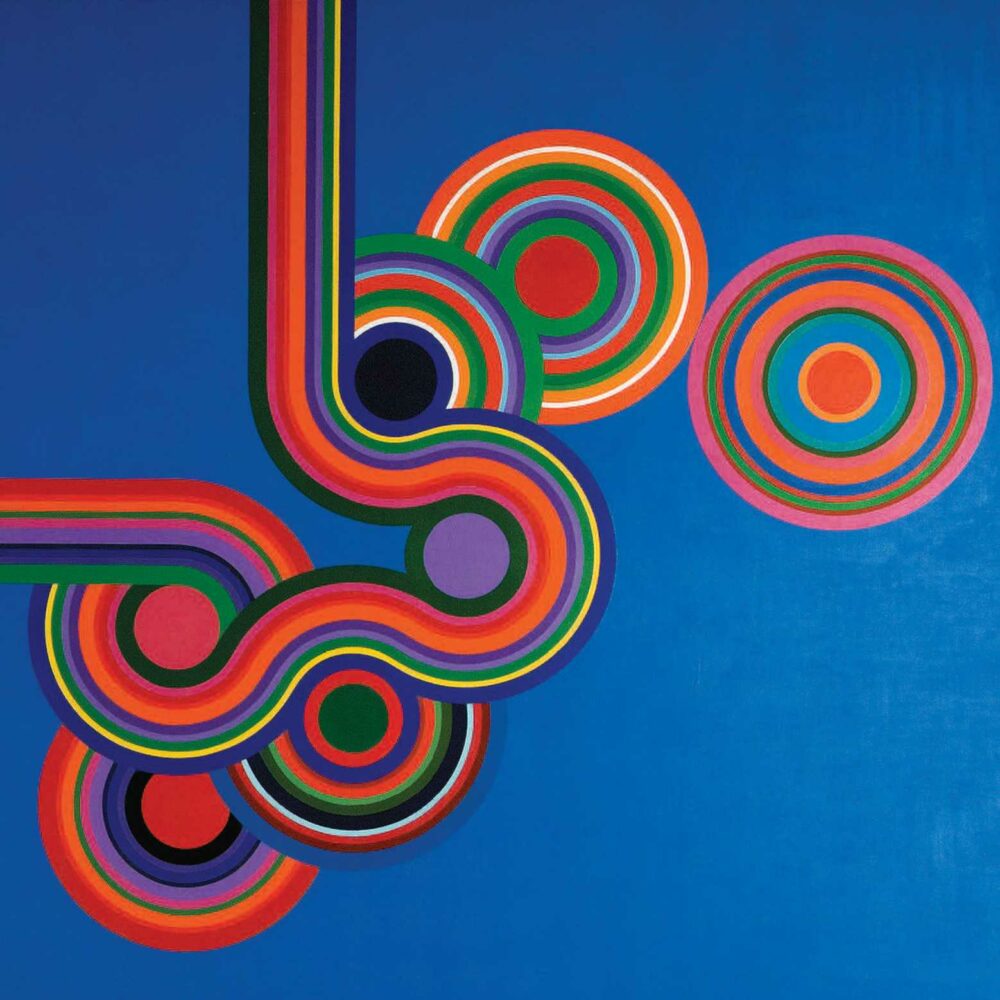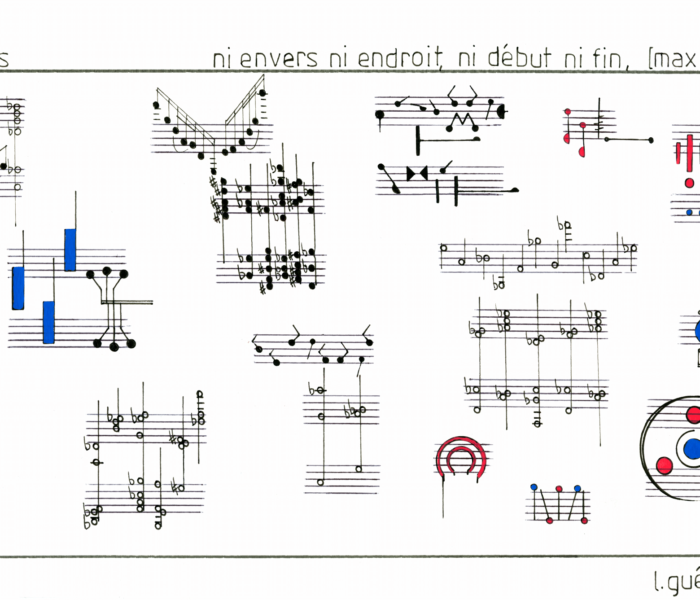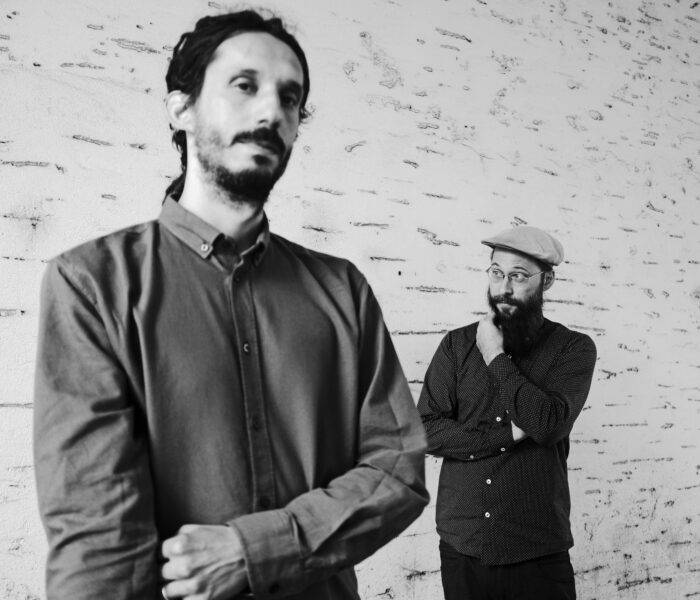La dualité écrit / non-écrit n’est pas sans affinités avec le couple axiomatique / intuitionniste, une terminologie empruntée à l’histoire des mathématiques, et notamment durant l’époque ou ces dernières ont cherché à « fonder » leur discipline[1]. Dans ce texte, il sera question des recherches musicales, de Debussy à nos jours, qu’on pourrait également appréhender comme une « crise des fondements », crise durant laquelle on assiste à l’émergence du son comme fondement.
Dans son bel article sur l’écoute musicale, « L’obédience », le philosophe Jean-François Lyotard esquissait un parallèle entre la crise des fondements que traversèrent les mathématiques et la musique contemporaine[2]. En effet, rien n’empêche de penser l’affaissement de l’édifice tonal, la prolifération de nouveaux matériaux sonores, l’invention pléthorique de systèmes compositionnels et même le dépassement de la scène à l’italienne, l’ouverture aux installations sonores ou encore la critique écologique de la musique – un ensemble de mutations qui couvrent plus d’un siècle, de Debussy à nos jours – comme une crise des fondements musicaux. Cette crise remet en question l’organisation de la musique sur le modèle du langage, selon deux niveaux : l’unité minimale (la note de musique) et le niveau de la grammaire (la combinatoire de notes). On a appelé « atonalité » un premier état résultant de cette crise ; mais, comme le pensait Schœnberg, l’un des premiers acteurs de cette crise des fondements, le terme a peu de sens, sinon un sens négatif [3]. Finalement, c’est la base même de la musique qui s’est imposée comme fondement, à savoir le son lui-même. Pour citer à nouveau Lyotard, durant cette crise des fondements, « tout s’est passé comme si la tâche des compositeurs était de procéder à une anamnèse de ce qui était donné sous le nom de musique. […] Dans la peinture, après l’exploration des contraintes portant sur l’organisation chromatique des surfaces, il ne reste plus que la couleur […] De même en musique, l’analyse des régulations de la hauteur ne laisse enfin subsister comme son que le matériau, l’énigmatique présence du vibrer[4] .»
Pour continuer le parallèle avec l’histoire des mathématiques, plusieurs chemins conduisent à l’émergence du son. Nous pourrions les regrouper en deux voies et reprendre le vocabulaire de l’épistémologie, en opposant la voie axiomatique à la voie intuitionniste. Serait axiomatique le travail effectué par Webern dans le premier mouvement de la Symphonie op. 21 (1928). Cette pièce possède une construction sérielle très raffinée – agissant comme un « matériel chromosomique[5] » –, qui donne bien du travail à l’analyste de la musique ! Mais l’oreille d’aujourd’hui, habituée à la musique-comme-son, l’appréhende immédiatement – du fait de la fixité des notes dans le registre et de l’écriture canonique qui conduit à la répétition de notes en écho malgré le principe sériel – comme une succession de résonances composées.
Dans l’après 1945, emblématique de cette voie serait Xenakis. Utilisant tantôt le papier millimétré pour dessiner des formes sonores et tantôt le calcul des probabilités pour calculer les valeurs des notes composant ses masses sonores, Xenakis nous donne, dès Metastaseis (1953-54), des œuvres enchaînant des sonorités composées, c’est-à-dire des sections qui ne sont pas conçues selon la logique du développement de cellules, mais sur le modèle du son.
Avec les compositeurs spectraux, la musique pensée comme son-composé est théorisée, l’œuvre musicale se présentant comme une transposition du microtemps (spectre) vers le macrotemps (composition instrumentale). C’est pourquoi, dès la fin des années 1970, Grisey, qui s’intéresse tout particulièrement à l’aspect transitoire et énergétique du son, rêve d’une « écologie du son, comme science nouvelle mise à la disposition de musiciens[6]… ». Plus près de nous, et pour mentionner également la musique électronique, nous pourrions citer Agostino Di Scipio qui, radicalisant le paradigme de la synthèse granulaire, nous donne, avec des pièces telles que Paris. La robotique des Lumières (2003, troisième des quatre pièces formant les Paysages historiques), des sortes de poussières sonores composées, offrant des modèles de sons « faibles », déconstruits – des contre-modèles des armes sonores qui prolifèrent dans nos sociétés de plus en plus autoritaires.
La voie intuitionniste, elle, pourrait être magistralement illustrée par Cage, qui aimait dire : « Je n’ai jamais écouté aucun son sans l’aimer : le seul problème avec les sons, c’est la musique »[7]. Après avoir exploré le bruit à la suite de Varèse, Cage s’oriente vers une musique où chaque son est une monade en soi, l’essentiel n’étant plus l’acte de composer, mais l’écoute, c’est-à-dire la prise de conscience du son : il s’agit de « laisser les sons être eux-mêmes. Être eux-mêmes pour ouvrir la conscience des gens qui les produisent ou qui les écoutent avec d’autres potentialités que celles qu’ils avaient envisagées auparavant »[8].
Mais on pourrait aussi penser à Scelsi, un compositeur très intuitif dont les partitions sont des transcriptions d’improvisations. Pionnier de l’immersion dans le son, Scelsi aimait affirmer que « le son est sphérique, mais en l’écoutant, il nous semble posséder seulement deux dimensions : hauteur et durée – la troisième, la profondeur, nous savons qu’elle existe, mais dans un certain sens, elle nous échappe[9] ». À la même époque, avec des albums tels que A Love Supreme (1964) ou Meditation (1965), Coltrane et ses musiciens développent une musique également immersive, presque liquide, qui dilue dans le son les caractéristiques traditionnelles du jazz. Et rien n’empêche de citer aussi le Stockhausen « méditatif » d’Aus den sieben Tagen (1968), qui donne des textes en guise de partition : « Joue un son jusqu’à ce que tu entendes chacune de ses vibrations », lit-on dans Fais voile vers le soleil [10]. Dans la musique plus récente, c’est à travers son écoute de la nature que John Luther Adams, avec Become Ocean (2013), Become River (2013) ou Become Desert (2018) – un « devenir » (become) qui n’est pas sans rappeler le Deleuze et Guattari de Mille plateaux –, nous plonge dans la musique-du-son.
Le couple axiomatisme / intuitionnisme n’est pas sans évoquer la dualité musique écrite / non écrite. Les exemples choisis pour illustrer la voie axiomatique se réfèrent à des œuvres musicales très construites et, a fortiori, totalement écrites. Quant aux exemples de la voie intuitionniste, si l’un (Adams) est de la musique écrite, un autre (Coltrane) relève de la musique improvisée et non-écrite, un troisième (Scelsi) de la musique improvisée puis transcrite et le dernier (Cage) de partitions dites « indéterminées », où les interprètes ont une grande latitude. Faisant converger axiomatisme et intuitionnisme, le devenir-son de la musique surplombe aussi l’opposition écrit / non-écrit. Il ne l’abolit pas, mais il l’envisage sous forme de complémentarité. Il est certain que l’émergence du son a été rendue possible par l’invention de l’enregistrement, qui est une forme d’écriture du son. En un sens, on pourrait dire que la partition a produit le concept d’œuvre, tandis que l’enregistrement a inventé le son. Cependant, l’enregistrement tend à réifier le son, à le poser comme objet. C’est pourquoi, de même que le concept d’œuvre est sans cesse remis en question (notamment par les musiques non-écrites), d’autres conceptions du son que celles de l’objet passent par des approches plus intuitives faisant appel au non-écrit.
Makis Solomos
[1] Au début du XXème siècle, plusieurs écoles de mathématiciens essayèrent d’unifier les différentes branches des mathématiques et de les asseoir sur des bases rigoureuses.
[2] Cf. Jean-François Lyotard, « L’obédience », InHarmoniques n°1, 1986. Repris in Jean-François Lyotard, L’inhumain ; causeries sur le temps, Paris, Klincksieck, 2014.
[3] « Permettez-moi de mentionner ici que je considère l’expression “atonale” comme vide de sens […] Un morceau de musique est toujours nécessairement tonal, du fait qu’une parenté existe toujours entre un son et un autre son et qu’en conséquence deux sons, disposés l’un à côté de l’autre ou l’un au-dessus de l’autre, se trouvent en condition d’association perceptible », écrivait Arnold Schönberg (Le style et l’idée, écrits réunis par Léonard Stein, traduction Christiane de Lisle, Paris, Buchet/Chastel, 1977, p. 219-220), pour qui « son » signifie « note de musique ».
[4] Jean-François Lyotard, op. cit., p. 108 et 110-111.
[5] L’expression est d’Henri-Louis Matter, Webern, Lausanne, L’Âge d’homme, 1981, p. 78.
[6] Gérard Grisey, « Devenir du son » (1978 et 1986), in Gérard Grisey, Écrits ou l’invention de la musique spectrale, édition établie par Guy Lelong avec la collaboration d’Anne-Marie Réby, Paris, éditions MF, 2008, p. 28.
[7] John Cage, Je n’ai jamais écouté aucun son sans l’aimer : le seul problème avec les sons, c’est la musique, traduction Daniel Charles, s.l., La main courante, 1994, p. 21.
[8] John Cage, entretien avec Bill Womack (1979), in Richard Kostelanetz, Conversations avec John Cage, traduction Marc Dauchy, Paris, Éditions des Syrtes, 2000, p. 77.
[9] Giacinto Scelsi, « Son et musique » (conversations improvisées entre Scelsi et des amis durant 1953 et 1954), Les anges sont ailleurs…, Arles, Actes Sud, 2006, p. 126-127.
[10] Karlheinz Stockhausen, Aus den sieben Tagen : « Fais voile vers le soleil », Vienne, Universal Edition, 1968.
Photo peinture de Kazuya Sakai – Aus Den Sieben Tagen, 1976



)



